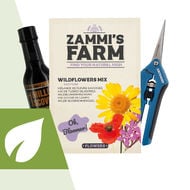
What's The Difference Between Pepper And Chili?
What are the fundamental differences between chilies and pepper? Are the terms interchangeable? We delve into everything you need to know about these spices, how they became popular, how they differ, and if one outperforms the other. Whether you're a Capsicum connoisseur or profess your love for Piperaceae daily, you stand to learn something.
When it comes to discussing pepper and chilies, you may think the words are interchangeable. However, there are some significant differences between the two that you may want to learn—so you can go from a casual condiment fan to a seasoned spice pro. If so, you're in luck; in this article, we'll let you in on everything you need to know and more about chili vs pepper.
What is pepper?
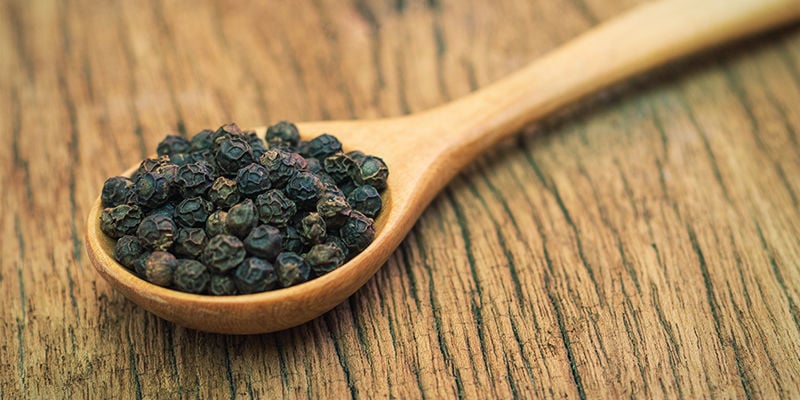
Pepper comes from the fruit produced by plants in the Piper genus, aka peppercorns. These fruits are then dried out and utilised as a seasoning. Traditionally, dried peppercorns are ground, but they can also be used whole. Peppercorns can even be found pickled—usually green ones.
Available in a variety of colours, each known for its subtle flavour differences, all have applications in cooking—from white pepper used in Chinese dishes, to green pepper favoured in Thai cuisine, to the favourite throughout Europe, black pepper.
Not only ideal for cooking, it's said that pepper also has some potential holistic benefits, and even has historical uses as a traditional medicine. Rich in antioxidants and with possible effects on inflammation, the list of potential benefits is long and still garners research.
Pepper history
We've touched upon some uses of pepper and some of its more traditional applications, but what are its origins? Native to South and Southeast Asia, pepper has been used in cooking from around 2000 BCE. The peppercorns themselves were a prized trade commodity, and were even referred to as “black gold” amongst trade markets of the time, and used as currency and collateral for a period.
However, as pepper began to oversaturate European markets in the 16th century, the overall value as a commodity decreased. Where it was once exclusive to the wealthiest people, pepper became a spice that ordinary folk could utilise, giving it much more widespread exposure than previously. Today, pepper is still enjoyed as a seasoning, and it accounts for ⅕ of the world's spice trade. So arguably it's as popular as ever, and with no signs of waning.
What is a chili?
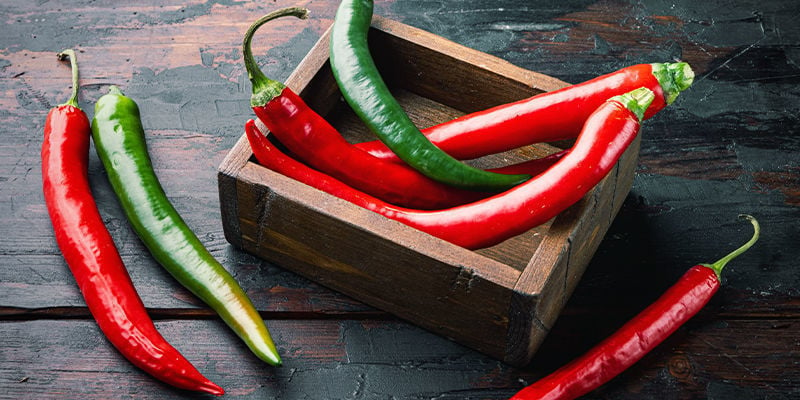
The fruit from plants in the genus Capsicum, chilies are harnessed for their flavours and spice. From the bell pepper all the way to the Carolina Reaper, each chili offers something unique to those looking to enjoy the fruits. Of course, chilies have a wide variety of applications. Whether utilised fresh, pickled, smoked, or dried, the options are plentiful for a chili berry. Perhaps the most common form is that of the powdered chili.
With use dating back many thousands of years, chilies impart a spicy flavour to all sorts of dishes, and can be cultivated easily. Traditionally, they're used in Mexican, Asian, and South American foods, but have branched out into other cultures since their discovery.
Like peppercorns, chili berries have some potential health and well-being benefits, as they are also rich in antioxidants and vitamins.
Growshop
Set up your grow the right way. Tents, lights, nutrients, propagation supplies, pots, and many handy accessories.
Chili history
Steeped in rich history, uses of the chili date back well over 8,000 years. Native to Mexico and South America, it's thought that the first-ever species of chili was discovered there. However, it wasn't until 1492 and Christopher Columbus' discovery of the new world that chilies began to reach a much wider audience. He sought to distribute them throughout Europe, and did so with great success. And for some added confusion, Europeans referred to the chilies as “peppers” because of the apparent similarities to the aforementioned peppercorns.
After this point, chilies made their way to parts of Asia, thanks to an introduction by Portuguese traders. The use of chilies is widespread to this very day, and many countries cultivate them, with China now being the largest producer in the world.
However, many independent growers across the globe create their own unique, boutique chili cultivars.
Pepper vs chili
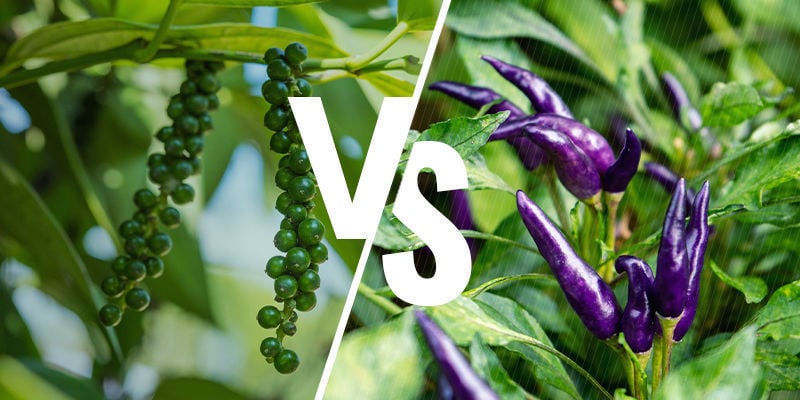
We've covered the basics and explained what pepper and chilies are—but how do they stack up against each other? What are the real differences between them? And most importantly, is one better than the other? With lots to cover, let's discuss.
Genus
Belonging to the Capsicum genus and Piper genus, respectively, chilies and pepper are both a form of berry produced by their host plants.
As mentioned, pepper comes from the small berries that grow on the plant's vine. The plant itself has much more of a shrub-like appearance than chilies. Once mature, the berries are harvested and dried before use.
Conversely, chili plants typically have a more prominent and leafy appearance, with the potential to produce much larger berries that arguably have a larger amount of uses, and come in many more shapes, colours, and flavours.
Appearance
Generally, chilies have the more unique appearance of the two. With so many varieties available, each species of chili takes on a different look, colour, and size compared to pepper varieties. But don't get us wrong, peppercorns are by no means lacking in aesthetics; it's just the fruits do look quite similar, albeit varying in colour and size. On the whole, chilies offer a more varied and unique fruit. But as with most things in life, it's what's inside that counts.
Spiciness
When it comes to spiciness, this is where things can get a little complicated. With chilies, there's a handy method of measurement. Developed by American pharmacist Wilbur Scoville, the Scoville scale is a test that allows users to determine the spice level, or heat level, of a chili.
The Scoville rating of a given chili can be determined by diluting an exact amount of dried and powdered chili pepper with sugar water until no spice can be tasted. For example, a bell pepper contains no capsaicin, so it will have 0 SHU (Scoville heat units). In contrast, a habanero contains around 150,000 SHU. As the hottest chili in the world—at least officially—the Carolina Reaper exceeds an eye-watering 1,500,000 SHU.
The use of a heat-based scale allows for easy cataloguing of the spiciness of chili peppers. However, when it comes to peppercorns, their spiciness is down to a chemical known as piperine. Unlike capsaicin, piperine produces a more mild heat that's highly unlikely to cause any discomfort, making pepper ideal for when just a little spice is required.
Uses
When it comes to uses, your preference for spice will really take precedence. Chilies are probably the more versatile of the two, in that they can be used fresh, dried, pickled, and powdered. Of course, chilies will provide varying levels of heat to dishes, whereas pepper's appeal is to offer up a milder, potentially more flavourful degree of spice to food. Peppercorns are commonly found ground, powdered, or in dry form, allowing for great ease of use, thanks to shakers and grinding mills. Often combined with salt, pepper can be found on nearly every dinner table worldwide.
Pepper, chili, or chili pepper?
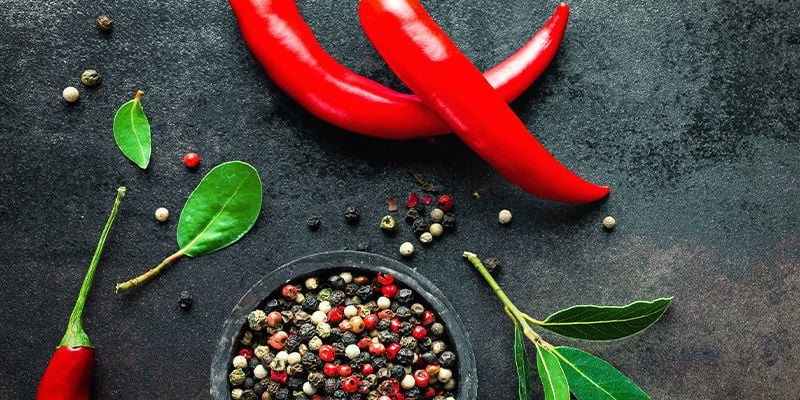
As you can probably tell by now, pepper, chilies, and chili peppers can be a confusing topic of conversation due to the interchangeable terminology. However, the takeaway is that no matter how you refer to them, there's no clear winner on which one is better. It really depends on your preference and the kind of spice level you enjoy. And thanks to the wide variety of pepper and chili products on the market today, you don't have to choose one over the other. Whether you feel like spicing up a meal with a dash of ghost pepper or just fancy enhancing your food with a sprinkling of ground peppercorns, the decision is yours.
-
 4 min
May 16, 2022
How To Store Chilies And Peppers (Short And Long Term)
There's no doubt about it; cultivating pepper and chili plants is a hugely rewarding experience. But it's the harvest we really do it for. Having a supply of great-tasting and spicy chilies at your...
4 min
May 16, 2022
How To Store Chilies And Peppers (Short And Long Term)
There's no doubt about it; cultivating pepper and chili plants is a hugely rewarding experience. But it's the harvest we really do it for. Having a supply of great-tasting and spicy chilies at your...
-
 5 min
May 13, 2022
How To Dry Chilies And Sweet Peppers
Whether you use them whole, as a ground spice, or to make your own spicy chili flakes, dried sweet peppers and chilies make an excellent addition to any spice cabinet or pantry. Best of all, drying...
5 min
May 13, 2022
How To Dry Chilies And Sweet Peppers
Whether you use them whole, as a ground spice, or to make your own spicy chili flakes, dried sweet peppers and chilies make an excellent addition to any spice cabinet or pantry. Best of all, drying...
-
 5 min
May 9, 2022
How To Stop Hot Pepper Burn
Are hot pepper burns par for the course when handling chillies? They shouldn't be! There are many precautions you can take to prevent burns, but also plenty of remedies should you find yourself...
5 min
May 9, 2022
How To Stop Hot Pepper Burn
Are hot pepper burns par for the course when handling chillies? They shouldn't be! There are many precautions you can take to prevent burns, but also plenty of remedies should you find yourself...
-
 8 min
March 18, 2022
How To Grow Hot Peppers Outdoors
There's nothing quite like having your own supply of spicy hot peppers. And while it may seem a daunting task to grow them outdoors, we're here to show that it's really not! All you need to do is...
8 min
March 18, 2022
How To Grow Hot Peppers Outdoors
There's nothing quite like having your own supply of spicy hot peppers. And while it may seem a daunting task to grow them outdoors, we're here to show that it's really not! All you need to do is...





 United States
United States

